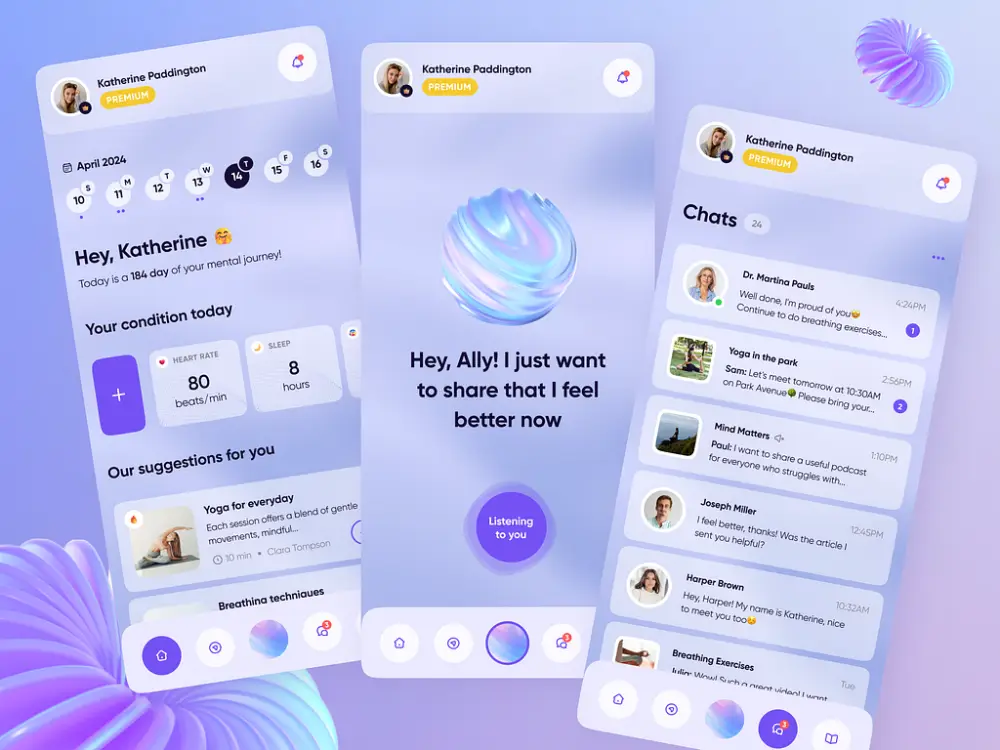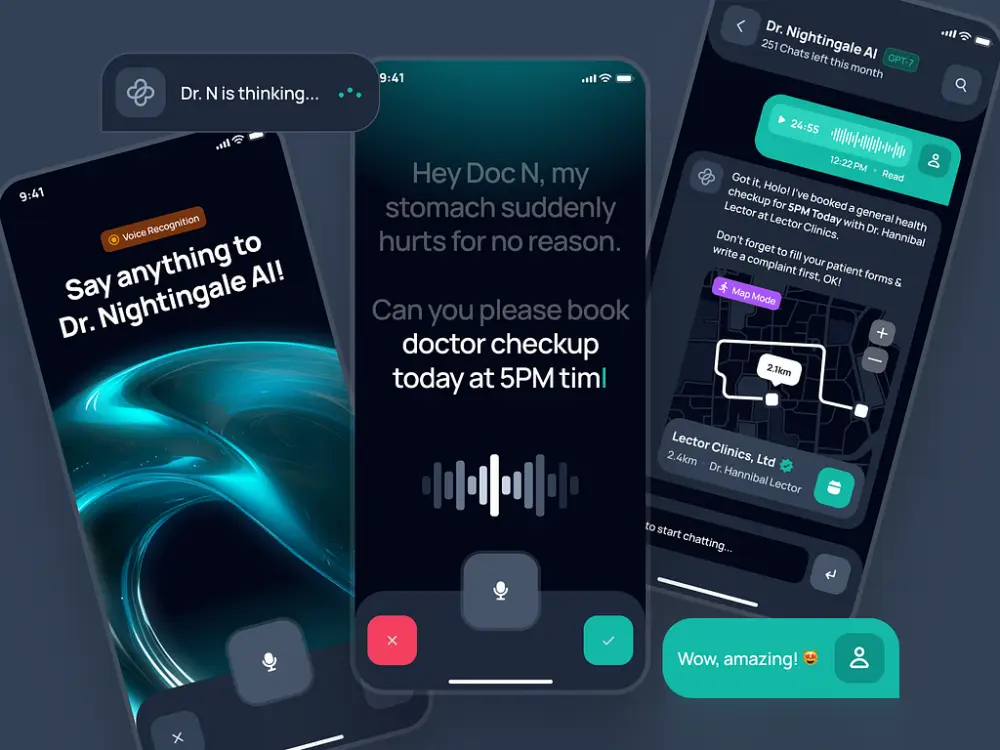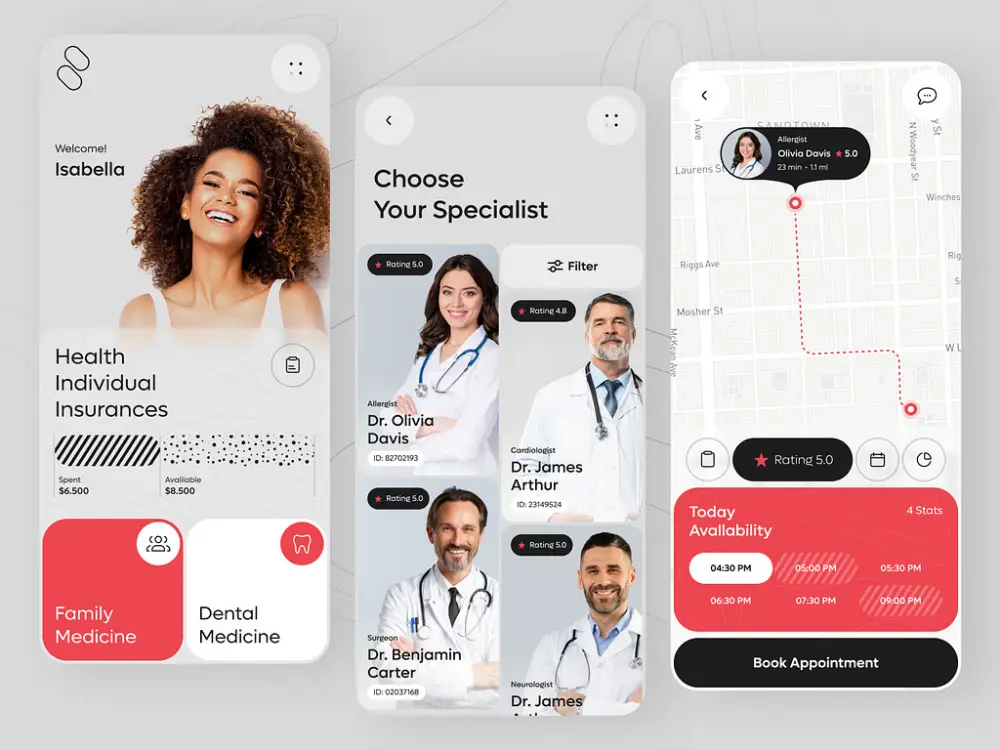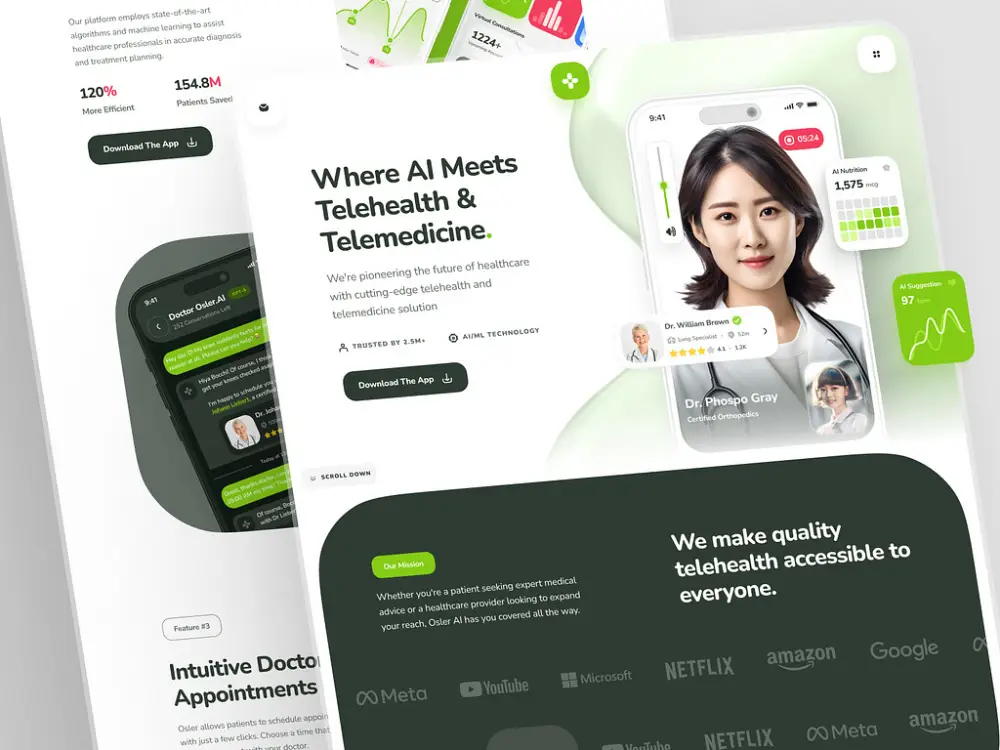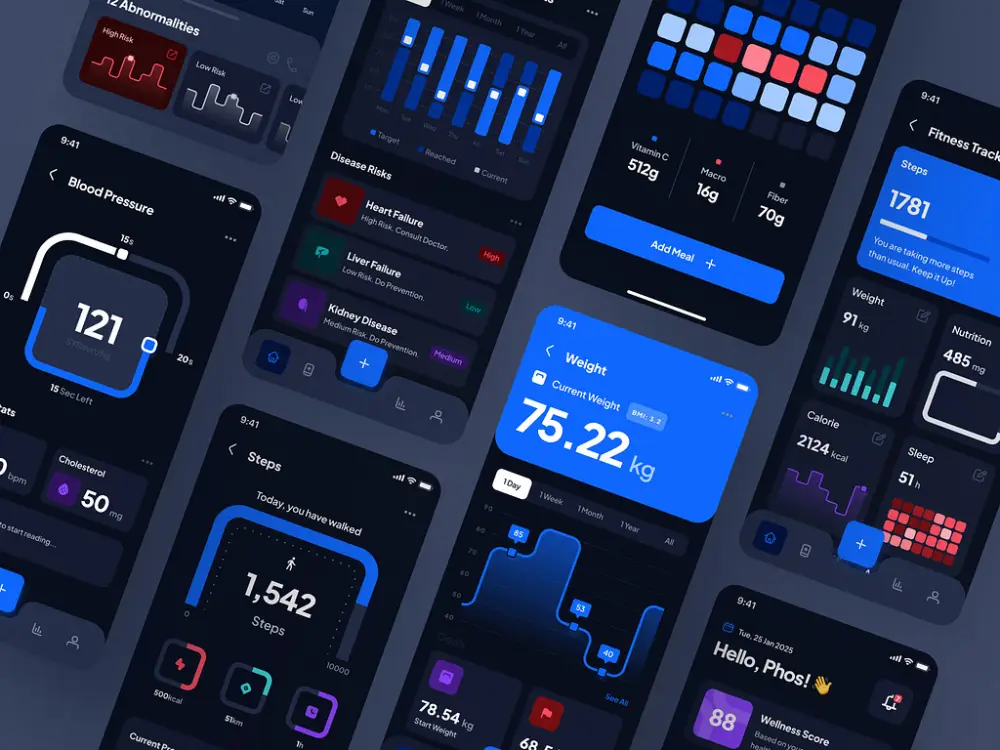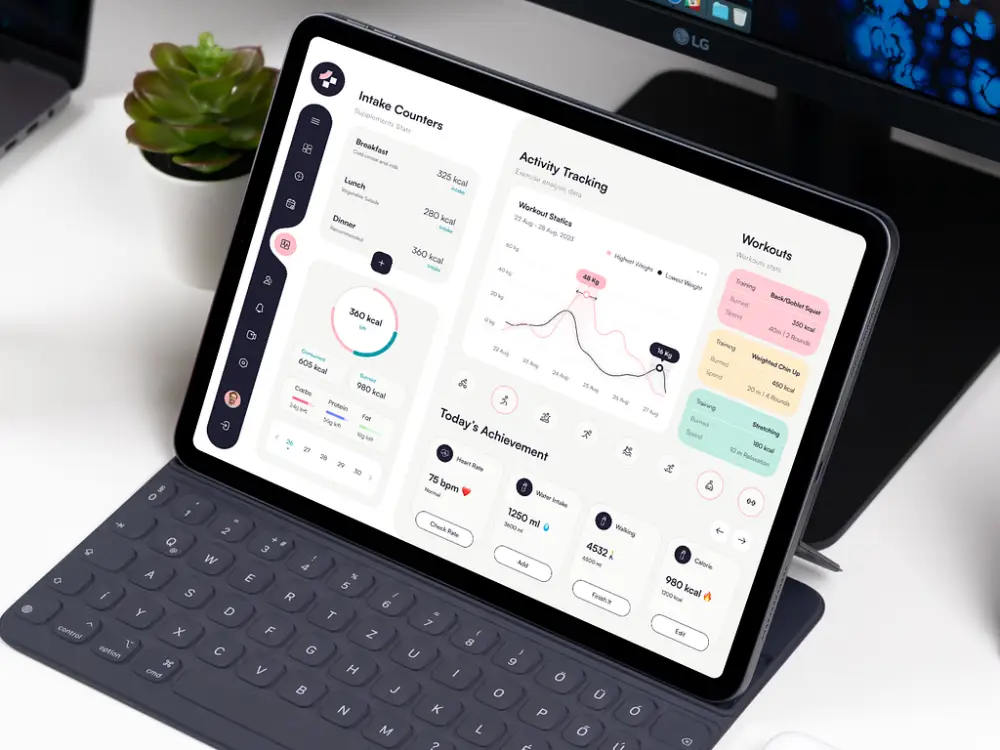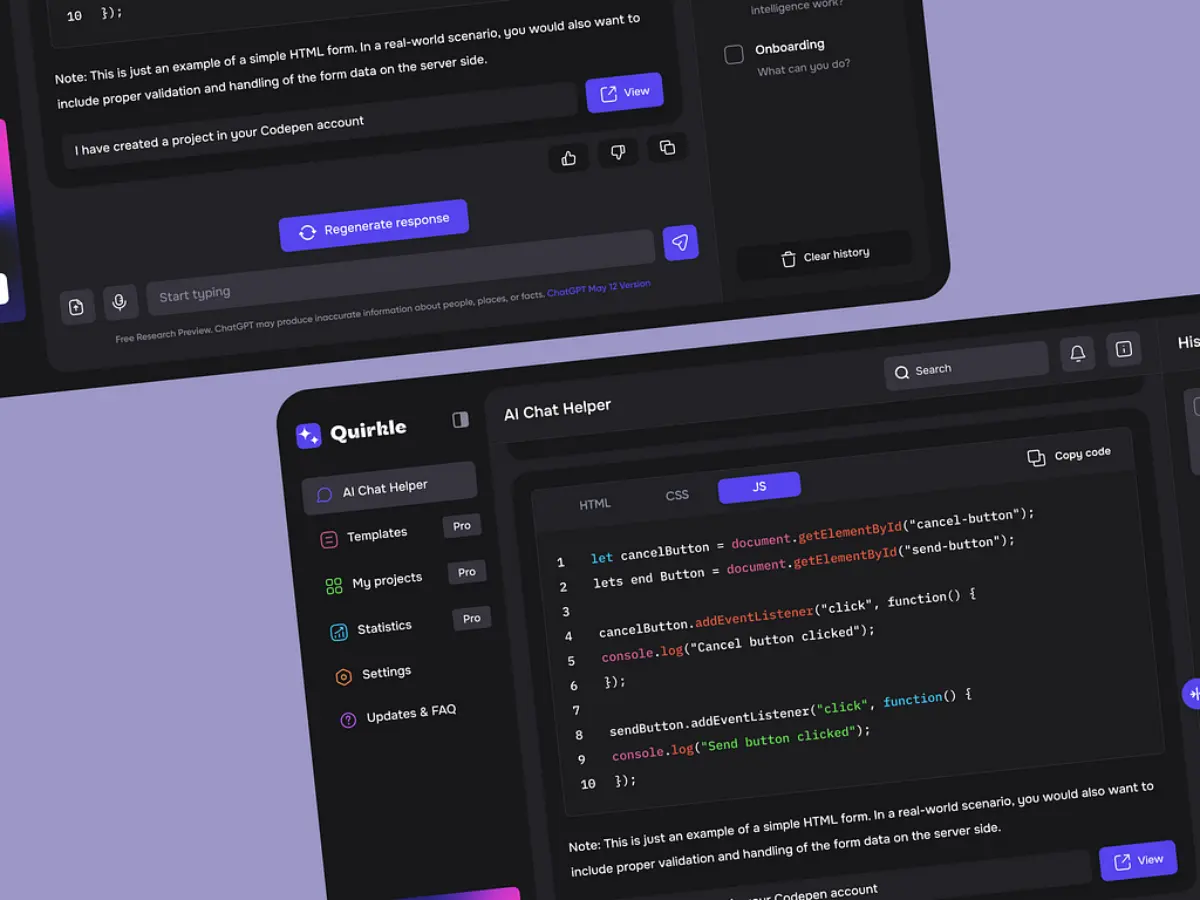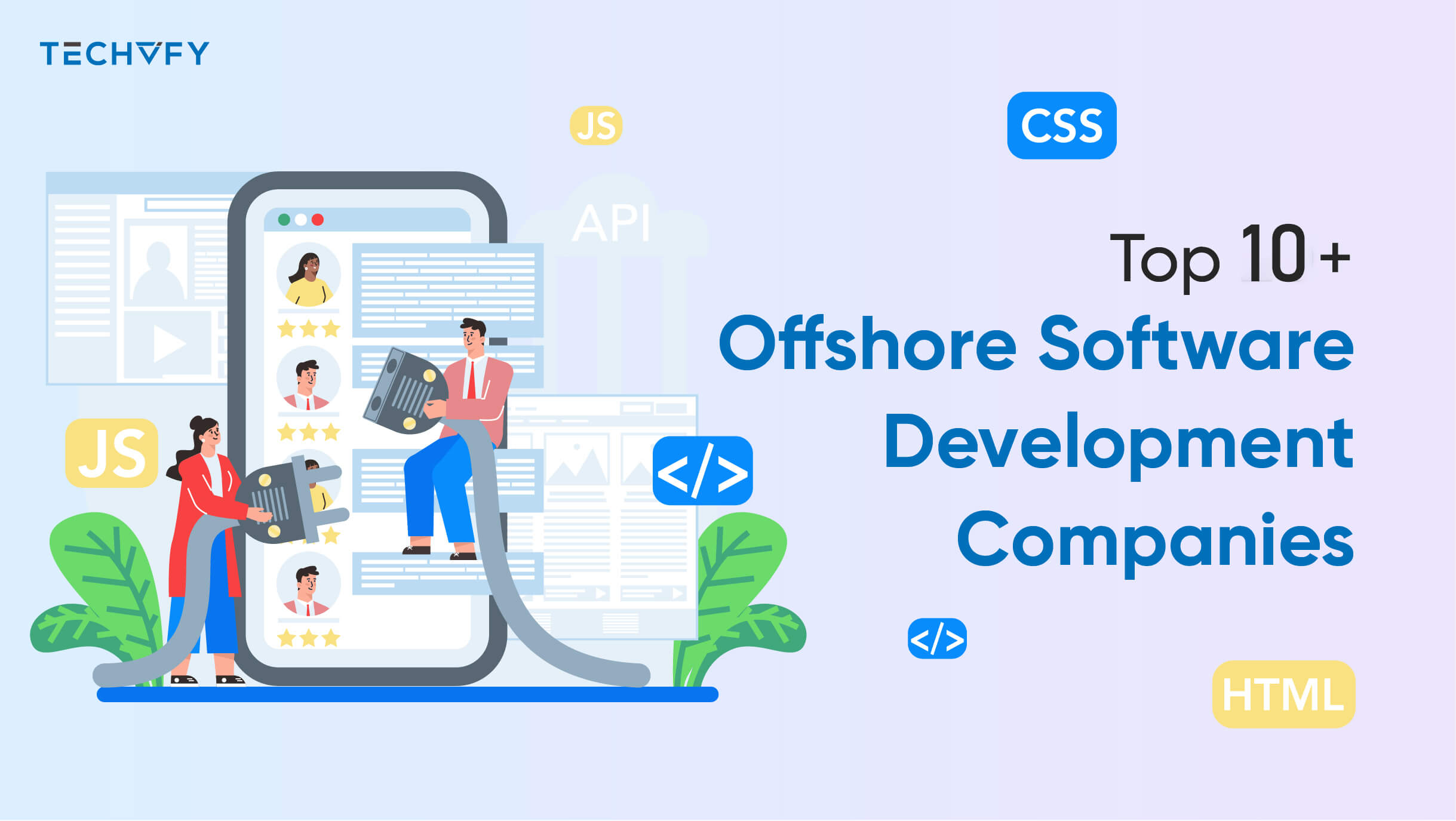How Much Does Telemedicine App Development Cost In 2025?
- TECHVIFY Team
- October 30, 2024
- Knowledge, Guides
- 0 Comments
The Covid-19 pandemic has made telemedicine one of the fastest-growing parts of the digital healthcare world. Connecting patients with medical professionals has never been easier.
More than half of doctors, medical advisors, and hospitals in the U.S. have already adopted telemedicine programs, and the latest market stats confirm it’s a trend that’s here to stay.
This article will break down the cost of developing a telemedicine app and the key factors that can bump up or lower that price. Having a clear formula to estimate telemedicine app development cost can help you make smarter investment decisions and avoid unnecessary risks.
I. Telemedicine App Development Market Overview
Before we dive into the specifics of what affects the total cost of a telemedicine app, let’s take a look at some recent market statistics to understand why investing in this space is such a great opportunity:
- The global telemedicine market was valued at $87.8 billion in 2022 and is expected to grow to $559.52 billion by 2027.
- More than 38% of patients opted for remote healthcare services in 2022.
- Over 74% of U.S. patients now prefer using telehealth services.
- The telehealth sector is projected to grow at a 35.18% annual growth rate between 2020 and 2029.
Telehealth apps have seen huge growth, and that’s mainly due to a combination of customer demand and changing views in the healthcare industry. What started out as a necessity during the pandemic—switching from in-person doctor visits to online healthcare—has now become a permanent part of how we get care. This shift has been driven by a few key factors:
- Patients are more open to telemedicine: Many people now see the benefits of getting healthcare from the comfort of their homes, without having to visit a doctor’s office.
- Healthcare providers are on board: Doctors and healthcare professionals have realized how telemedicine can help them serve patients more efficiently and effectively.
- Regulatory changes make it easier: Recent updates in healthcare regulations have made telemedicine more accessible, and allowed for easier reimbursement for telehealth services.
On one hand, telemedicine apps are making healthcare more affordable and accessible for patients. On the other hand, they offer a huge opportunity for entrepreneurs who want to break into the digital health space.
According to the Rock Health Digital Health Funding Report, venture capital investment in the digital health world hit $10.3 billion in the first half of 2022, with total funding reaching $21 billion for the year. These numbers show just how much potential there is for growth in telemedicine, making it a key player in the future of healthcare.
II. The Advantages of Developing a Healthcare Mobile App
Healthcare apps are incredibly useful for both patients and healthcare professionals alike. Creating an app in this space offers benefits to everyone involved, making it a true win-win solution.
1. Enhanced Patient and User Engagement
Healthcare has been moving toward a more patient-centered approach, and mobile apps play a big role in this shift. These apps let users easily access their medical records, appointment details, and prescriptions—without having to make a trip to the hospital or doctor’s office.
In the wellness space, users can connect with fitness and health experts through live-streamed audio and video sessions. They can also use these apps to access valuable exercise routines and nutrition tips, which help improve their overall well-being.
2. Better Patient Care
Healthcare apps make it easier for doctors to communicate not only with their patients but also with other medical professionals. This improved communication can lead to more accurate diagnoses and better treatment decisions, which in turn enhances patient outcomes.
In addition, patients can take a more active role in their healthcare. Having quick access to information like test results empowers them to make informed decisions about their treatment.
3. Simplified Compliance
When it comes to displaying medical information, ensuring compliance is crucial. Healthcare apps can be designed with strong security features to protect patient data, meeting the standards set by regulations like the Health Insurance Portability and Accountability Act (HIPAA).
4. Easy Access to Medical Professional Information
Users can use healthcare apps to find the right professional—whether it’s a doctor, nutritionist, or personal trainer. Apps can display profiles, certifications, and educational background, making it easier for patients to choose someone within their insurance network or local area.
5. Convenient Online Payments
With a secure payment system integrated into the app, users can pay for gym memberships, healthcare deductibles, or doctor visit copays. This feature is especially helpful for older adults or people with disabilities who may have a harder time getting to a hospital or clinic to make payments in person.
III. Factors Influencing Telemedicine App Development Cost
Developing a telemedicine app is like crafting a bespoke piece of art – every detail matters, and each choice can impact the final cost. To help you navigate this exciting journey, let’s break down the key factors that influence the cost of telemedicine mobile app development.
Features & Functionality
When it comes to features and functionality, think of your telemedicine app as a Swiss Army knife. The more tools and gadgets you include, the more versatile (and costly) it becomes. There are essential features for both the patient app and the doctor app, which can significantly influence your development budget.
Must-Have Features
Here are the most basic must-have features for a telemedicine app:
- User Authentication: Secure login systems to protect patient data.
- Video Conferencing: High-quality, real-time video consultations between patients and healthcare providers.
- Appointment Scheduling: Easy-to-use interfaces for booking, canceling, and rescheduling appointments.
- E-Prescriptions: Ability to send prescriptions directly to pharmacies.
- Payment Integration: Secure payment gateways for processing fees and insurance.
Patient App
Patient app functionality is all about making the patient experience convenient and intuitive. The features in a patient app enable users to easily schedule appointments and access medical care remotely. This is especially crucial for individuals with mobility issues, transportation challenges, or busy schedules. Let’s take a closer look at each feature below:
| Feature | Development Time (h) |
|---|---|
| Calendar | 30 hours |
| Notifications | 16 hours |
| Search and Filters | 35 hours |
| Profile Management | 20 hours |
| Text Chat | 40 hours |
| Payment Details | 20 hours |
| Video Conferencing | 70 hours |
| Rating System | 10 hours |
| Registration | 10 hours |
| Patient Dashboard | 40 hours |
Doctor App
On the flip side, the doctor app is designed to streamline the workflow for healthcare providers. It includes features that allow doctors to manage appointments, consult with patients, and access medical records with ease. By enhancing efficiency and communication, the doctor app ensures that healthcare providers can deliver the best possible care. Let’s explore the key features that shape the doctor app:
| Feature | Development Time (h) |
|---|---|
| Calendar Management | 60 hours |
| Viewing EHRs | 100 hours |
| Communication | 70 hours |
| Physician Profile | 50 hours |
Looking to Develop a Telemedicine App?
Contact TECHVIFY – Vietnam’s Leading Software Development Company, for AI-powered telemedicine app development, eHealth solutions, and end-to-end consulting services.
Development Platform
The choice of development platform is a critical factor that influences the cost and functionality of your telemedicine app. There are two main approaches to consider: native app development and cross-platform development. Each has its own advantages and best use cases.
Native App Development
Native app development involves creating separate versions of the app for each operating system, typically iOS and Android. This approach ensures that the app fully leverages the capabilities of each platform, providing a more seamless and optimized user experience.
- iOS Development: Swift and Objective-C are the primary programming languages used for developing iOS apps. Swift is the preferred language for new projects due to its modern syntax and performance benefits.
- Android Development: Kotlin and Java are the main programming languages for Android app development. Kotlin is often favored for new projects because of its concise syntax and enhanced features.
Developing a fully decked out telemedicine app natively for each platform can cost around $50,000 to $100,000. This investment reflects the need for separate codebases and tailored optimization for each operating system.
Cross-Platform Development
Cross-platform development allows you to create a single app that runs on both iOS and Android. This is achieved using frameworks that enable code sharing across platforms.
- Popular Frameworks: React Native and Flutter are two of the most popular frameworks for cross-platform development. React Native uses JavaScript, while Flutter uses Dart.
- Cost Reduction: Cross-platform development can significantly cut costs by up to 50%, making it a more budget-friendly option while still delivering a consistent user experience across different devices.
Choosing between native and cross-platform development depends on your specific needs, budget, and timeline. Native development is ideal for apps that require high performance and intensive use of platform-specific features, while cross-platform development offers a more cost-effective and quicker solution for reaching a broader audience.
Learn More On:
UI/UX Design
The user interface (UI) and user experience (UX) design are critical components of a successful telemedicine app. A well-designed UI/UX not only enhances the app’s aesthetics but also improves usability, ensuring that patients and healthcare providers can navigate the app effortlessly.
Importance of UI/UX Design
A telemedicine app must cater to a diverse user base, including patients who may not be tech-savvy and healthcare providers who require efficient tools to manage their workflow. Therefore, the design must be intuitive, accessible, and user-friendly.
Key elements to consider in UI/UX design for a telemedicine app include:
- Simplicity and Clarity: The interface should be simple and clear, with easily recognizable icons and straightforward navigation paths. Avoid cluttering the screen with too many elements.
- Consistency: Maintain a consistent design language throughout the app. This includes using a uniform color scheme, typography, and button styles.
- Accessibility: Ensure the app is accessible to users with disabilities. This can include features like voice commands, screen readers, and adjustable text sizes.
- Responsive Design: The app should work seamlessly on various devices and screen sizes, from smartphones to tablets.
- Patient-Centric Design: Focus on the needs and comfort of the patient. This includes easy access to medical records, simple appointment scheduling, and clear instructions for video consultations.
- Feedback and Confirmation: Provide immediate feedback for user actions, such as booking an appointment or sending a message. Confirmation messages and error notifications should be clear and helpful.
Impact on Development Cost
Investing in high-quality UI/UX design can significantly impact the development cost. A well-designed app requires thorough research, multiple iterations, and extensive testing. It involves collaboration between designers, developers, and testers to ensure that the final product meets user expectations.
While this may increase the initial development cost, a superior UI/UX design can lead to higher user satisfaction, better retention rates, and ultimately, a more successful app. Poor design, on the other hand, can result in user frustration, increased support requests, and higher churn rates.
Tools and Technologies
Modern UI/UX design leverages various tools and technologies to create and test designs. Some popular tools include:
- Sketch, Figma, and Adobe XD: For creating wireframes, mockups, and prototypes.
- InVision and Marvel: For interactive prototyping and user testing.
- Zeplin: For collaboration between designers and developers, ensuring accurate implementation of designs.
By prioritizing UI/UX design, you can create a telemedicine app that is not only functional but also delightful to use, thereby improving patient engagement and satisfaction.
Looking for AI-powered Healthcare Solutions?
TECHVIFY is the best option for you. Book a free consultation to get an accurate time and cost estimation for your project.
Compliance & Security
In the realm of healthcare, maintaining a fortress of compliance and security is not just a necessity – it’s a mandate. Telemedicine apps must navigate a labyrinth of regulations and standards to protect patient data and ensure seamless, lawful operation. Here’s a glimpse into the key regulations you’ll need to embrace:
- HIPAA: The guardian of sensitive patient health information in the United States, HIPAA sets the gold standard for safeguarding Protected Health Information (PHI). Compliance means implementing rigorous protocols to protect patient data from breaches and unauthorized access.
- GDPR: If your telemedicine app extends its reach to the European Union, the General Data Protection Regulation (GDPR) is your guiding star. GDPR mandates stringent guidelines for the collection, storage, and processing of personal data, ensuring that privacy is a fundamental right.
- FDA: For telemedicine solutions that venture into the realm of medical devices and diagnostics, the Food and Drug Administration (FDA) regulations come into play. This ensures that your app meets the highest standards of safety and efficacy, akin to any medical device on the market.
- PCI DSS: When financial transactions are part of your app’s functionality, the Payment Card Industry Data Security Standard (PCI DSS) becomes crucial. This set of requirements is designed to safeguard cardholder data during transactions, ensuring secure payment processes.
- Regional Laws: Beyond global regulations, each country has its own tapestry of laws governing telemedicine. From licensure requirements for physicians to the intricacies of patient-provider relationships, understanding and adhering to regional laws is paramount. Researching country-specific regulations ensures that your app is compliant no matter where it operates.
Third-Party Integrations & AI Powered
In today’s interconnected digital healthcare landscape, integrating your telemedicine app with existing eHealth software solutions is essential. Seamless integration with lab systems, Electronic Health Records (EHRs), and Internet of Things (IoT) devices can create a holistic and interconnected healthcare environment. However, enriching your telemedicine app with multiple integrations can contribute to development complexity and overall costs.
Essential Integrations
Implementing basic integrations is a foundational step for a robust telemedicine app. Such integrations include:
- Appointment Scheduling: Streamlining the process for patients to book, reschedule, or cancel appointments effortlessly.
- Payment Gateways: Ensuring secure and straightforward transactions for services rendered.
- Email Notifications: Keeping patients and healthcare providers informed with automated reminders, updates, and confirmations.
- AI Chatbot: Providing immediate assistance, answering common queries, and guiding users through the app.
The Power of AI and GenAI
Artificial Intelligence (AI) and Generative AI (GenAI) are revolutionizing the telemedicine space. These technologies can significantly enhance the functionality and user experience of your app:
- AI-Powered Diagnostics: Leveraging AI to analyze patient data and provide preliminary diagnostics, helping healthcare providers make informed decisions more quickly.
- Personalized Recommendations: Using AI to offer personalized health advice and treatment plans based on individual patient data and history.
- GenAI for Content Generation: Employing GenAI to generate personalized content, such as health tips, educational material, and even automated patient follow-ups.
- Predictive Analytics: Utilizing AI to predict patient needs and potential health issues, enabling proactive care and intervention.
The integration of AI and GenAI not only enhances the capabilities of your telemedicine app but also improves patient engagement and satisfaction. These technologies can automate routine tasks, provide deeper insights into patient health, and offer a more personalized healthcare experience.
Learn More On:
IV. How to Optimize Your Telemedicine App Development Cost
Developing a telemedicine app is a significant investment, but with strategic planning and thoughtful decision-making, you can optimize costs while still delivering a high-quality product. By focusing on essential features, leveraging cost-effective technologies, and adopting efficient development practices, you can ensure that your app meets both your budget and user expectations.
Telemedicine App Types
Before you dive into development, it’s essential to pinpoint exactly what type of telemedicine app you want to create. Each type has its own set of requirements, features, and potential costs. Identifying the core focus of your app will help you allocate resources more efficiently and avoid unnecessary expenses.
- Digital Therapy: Imagine an app that becomes a virtual sanctuary for mental wellness. These apps bring therapists and patients together through seamless video calls and chat features, providing a haven where users can explore mental health resources and find solace in digital therapy sessions.
- Remote Monitoring: Envision a network of IoT devices and sensors diligently keeping tabs on patient health from afar. These apps transform homes into mini healthcare hubs, transmitting vital data to healthcare providers who can intervene swiftly and effectively based on real-time insights.
- Chronic Conditions Treatment: Picture an app designed as a personal health coach for chronic conditions. Whether it’s diabetes, hypertension, or asthma, these apps empower patients with tools to monitor their symptoms, remind them to take medications, and maintain direct communication with their healthcare providers for ongoing support.
Cooperation Model
Choosing the right cooperation model is a crucial step in optimizing your telemedicine app development cost. Each model offers unique advantages and challenges, impacting not only your budget but also the quality and timeline of your project. Here’s a closer look at three popular cooperation models:
- Freelance: Hiring freelance developers can be a cost-effective solution, with hourly rates ranging from $25 to $150 depending on the region. However, finding a talented freelancer can feel like playing the lottery – while you might discover a gem, there’s also a risk of inconsistency in quality and reliability.
- In-House Development: Building an in-house team ensures that your developers are fully aligned with your company culture and goals. This model provides direct control over the development process, but it often demands significant time, money, and effort. The costs associated with salaries, benefits, and overheads can quickly add up, making this approach more suitable for larger organizations with substantial budgets.
- Outsourcing: Partnering with an Healthcare Solution Outsourcing Company that specializes in telemedicine solutions can be a game-changer. This model allows you to leverage industry-specific expertise and resources, often at a more affordable rate than in-house development. For instance, developers in the US typically charge between $60 and $150 per hour, while in the UK rates range from $50 to $120 per hour. Meanwhile, developers in Vietnam offer competitive rates of $25 to $40 per hour. Outsourcing can significantly reduce time-to-market and overall costs, provided you manage the partnership effectively to ensure alignment with your vision and standards.
Let’s talk
A consultation with the Client Relationship Manager, who represents TECHVIFY, without any commitment from your side, will give you:
- Structured and clear vision of your future application
- Information about how our software development company guarantees 100% on-time and on-budget delivery
- Recommendations for choosing the tech stack
- Advice on further steps
- Business-side recommendations
- Rough project estimation on software development
TECHVIFY is right where you need. Contact us now for further consultation:
Team Size
The size of your development team plays a pivotal role in determining the overall cost of your telemedicine app. Larger teams often mean higher labor costs, increased resource allocation, more complex communication, and greater risks associated with coordination. Balancing the number of team members is key to optimizing both efficiency and budget.
To give you a clearer picture, here’s a basic assembly of software experts you might need for a telemedicine app:
- Project Manager: The conductor of your development orchestra, ensuring that every part plays in harmony and deadlines are met.
- Business Analyst: Your strategic thinker, analyzing market needs and translating them into actionable app requirements.
- Solution Architect: The mastermind behind your app’s technical blueprint, designing systems that are robust and scalable.
- UI/UX Designer: The artist who crafts intuitive and engaging user experiences, making sure your app is both beautiful and functional.
- Telemedicine App Developers: The builders who bring your vision to life through code, implementing features and ensuring smooth functionality.
- QA and DevOps Engineers: The guardians of quality and efficiency, rigorously testing the app and maintaining seamless operations.
However, sometimes a full team isn’t necessary. In such cases, you can leverage staff augmentation – a flexible cooperation model that allows you to bring in specific healthcare software experts as needed. By hiring outsourced IT specialists, you can expand your team’s expertise without the overhead of a full-time staff, ensuring you get the skills you need when you need them.
Learn More On:
V. How Much Does It Cost to Develop a Telemedicine App?
Curious about the price tag attached to developing a cutting-edge telemedicine app? Let’s dive into the numbers and illuminate the path to your digital healthcare solution.
Our cost estimate is based on the average hourly rate of $25/hour in Southeast Asia, Vietnam. This region is renowned for its skilled developers who offer competitive rates, making it a strategic choice for cost-effective yet high-quality telemedicine app development.
| Features | Approx Time (hours) |
|---|---|
| Patient | |
| Registration & Login | 162 |
| Profile management | 165 |
| Search & filters | 256 |
| Video calls | 144 |
| Voice calls | 88 |
| Text chat | 293 |
| Appointment management | 235 |
| Notifications | 54 |
| Doctor | |
| Registration & Login | 36 |
| Profile management | 140 |
| Appointment management | 214 |
| Video calls | 60 |
| Voice calls | 60 |
| Text chat | 60 |
| Admin panel | |
| Admin panel | 272 |
| Total development time | 2499 |
Given the meticulous planning, expert team composition, and the comprehensive amount of work involved, the cost of developing a top-tier telemedicine app will be approximately $62,475. Ready to bring your Telemedicine App Development to life? Reach out to our healthcare business engineering department for a bespoke estimation tailored to your unique project needs.
Conclusion
The telemedicine industry is booming, and with the right approach, developing a telemedicine app could be a game-changing opportunity for your business. From enhancing patient care to offering a more convenient way for users to access healthcare services, telemedicine apps are revolutionizing the healthcare landscape.
Whether you’re looking to create a simple telemedicine app or something more complex, it’s crucial to partner with an experienced development team that can guide you through the process and bring your vision to life.
At TECHVIFY, we specialize in developing high-quality, cost-effective telemedicine apps tailored to your specific needs. Our team of experts will work closely with you to deliver an MVP or full-scale app that meets your goals while staying within budget.
Contact us today for a free consultation and let’s discuss how we can turn your telemedicine app idea into a successful reality. With TECHVIFY, you get more than just development services—you get a reliable partner committed to your success.
TECHVIFY – Global AI & Software Solution Company
From Startups to Industry Leaders: TECHVIFY prioritizes results, not just deliverables. Accelerate your time to market and see ROI early with high-performing teams, AI (including GenAI) Software Solutions, and ODC (Offshore Development Center) services.
- Email: [email protected]
- Phone: (+84)24.77762.666




